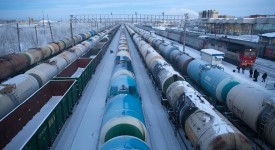The phenomenal rise in U.S. production of shale gas speaks for itself. From 1.6 percent of total U.S. natural gas production in 2000 to 23.1 percent by 2010 and a forecast of about 50 percent in 2020.
The International Energy Agency in Paris (IEA) said recently that it expected the U.S. to overtake Russia as the world’s biggest gas producer by 2015 and to become “all but self-sufficient” in its energy needs by about 2035.
It sounds fantastic and, if true, it poses an enormous challenge to Europe, but is it true? Is it the game changer of the magnitude and importance talked about over several years? Almost certainly not. A more critical analysis reveals that, yes, its repercussions will be massive, but not to the extent we have been told – an example of rhetorical overshooting!
The energy market, in particular the oil price, is determined by aggregate supply and demand, not one single source of energy supply. Shale gas has so far been cheaper than other energy sources, but some of the easiest accessible sources are close to exhaustion instigating extraction from other less inviting sources bringing along a narrowing of the price gap.
From the start shale gas was in the firing line from environmentalists pointing to vast areas of land laid waste when digging up the special sands needed (by the way not found near the shale gas so needed to be transported), consequences for drinking water with risk of intoxication on a long term basis, and several other negative side effects. So far these voices have been overruled albeit not silenced. The U.S. has put the economic advantages of low energy costs and political gains of reduced dependence on overseas suppliers ahead of environmental concerns. It seems, however, that environmentalists are gaining ground so the equation may not continue to be so uniquely in favor of ‘go ahead with shale gas’.
In Europe, environmental concerns have so far had the upper hand. Many countries have invoked a ban on shale gas and if a convincing case can be made that rejection of shale gas is manageable it may continue to be the case. Most European countries do not feel that the relative benefits from the extraction of shale gas outweigh the negative environmental effects plus the considerable investment required in infrastructure.
Shale gas improves U.S. competitiveness vis-à-vis Europe, but again things should not be judged superficially. Energy is one part of production costs, but for most industrial sectors far from the most important one. With economic globalization it is also difficult to see major differences in energy prices persist.
Europe wants to eschew its dependence on Russian gas which is also pushing Europe to diversification. Only one country has put energy self-sufficiency ahead of other concerns and that is Estonia as a neighbor to Russia. “We are the most energy independent country in the European Union, and we will not compromise our energy security. We have a large neighbour,” were the words spoken recently by Juhan Parts, the country’s former Prime Minister (2003-2005).
In July 2013, the U.S. government published a forecast saying that worldwide use of energy will rise with 56 percent until 2040, but it also says that all energy sources will go up and that natural gas will be a smaller share than coal and liquid fuels. Such prognoses reflect expectations about inter alia economic growth and technology, but nevertheless give a clue to what we may expect and this one cut the impact of shale gas down to size. One, yes an important one, but not more than one of five different energy sources.
There may be one aspect connoting concern for Europe: its foreign and security policy, in particular in the Middle East. It is well known that plummeting U.S. imports of oil from this region may dampen the U.S. interest in keeping it stable. This is not new. Already now only 40 percent of U.S. use of petroleum products comes from net imports and the Middle East account for about 22 percent of the net imports.
But, the U.S. may see its economic interest in keeping the oil price high favoring U.S. competitiveness however limited it may be. Two other main players have analogous interests: Russia with an economy almost totally dependent on resources and then there is also Saudi Arabia. On the other hand, the regions or countries interested in a low oil price are Europe, China, Japan, and India – the rest of the world. The problem for ‘the rest of the world’ is that they are not really players in the game about sorting out the turmoil in the Middle East. If in doubt, look no further than at the still unfolding drama in Syria and its chemical weapons whereby the U.S. and Russia are suddenly and unexpectedly working together.
This may prove to be the fatal point for Europe when speaking of shale gas: sharing common interests with China, Japan, and India and not with the U.S. The game changer!







